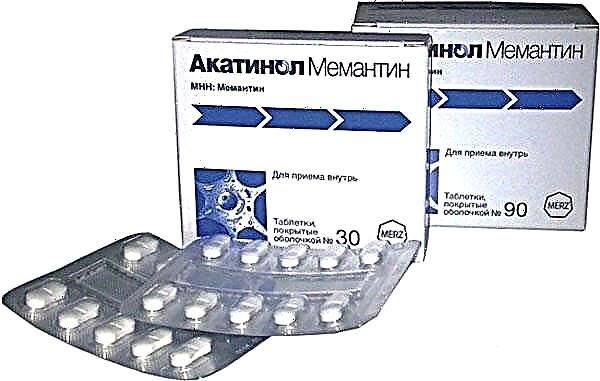The child is already six months old. The local pediatrician insists: it's time to introduce complementary foods. What can you give a child at 6 months to eat and drink?

Baby nutrition at 6 months
How to properly feed your baby at 6 months
Note. The diet of an infant under the age of six months should only contain breast milk or formula. In the case of mixed feeding - both.
All foods that the baby begins to receive in addition to formula and breast milk are called complementary foods. WHO recommendations state that it must be administered from six months.
The baby receives all the necessary nutrients, vitamins and trace elements from breast milk or formula. For growth and full development in the first six months of life, he does not need more. It is necessary to provide the nursing mother with a full and varied diet and purchase a high-quality milk formula for the baby. In this case, until the child reaches 6 months, it is not required to feed the baby with anything, urges pediatrician E. Komarovsky. There is no benefit from early feeding. But there are unpleasant consequences in the form of stool disorder and allergic rashes.

Nutrition for a child at 6 months and a nursing mother according to Komarovsky
Suitable diet for a half-year-old baby
At the age of six months, the baby should have at least 5 meals a day. Night feeding remains if the baby has not yet switched to continuous night sleep. An example mode looks like this:
- 6 am - first meal (milk or mixture);
- 10 am - second breakfast, complementary feeding and supplementary feeding with milk or mixture;
- 2 pm - lunch consisting entirely of complementary foods;
- 6 pm - supper of complementary foods and supplementary feeding with milk (mixture);
- 22 hours - breast milk or formula.
Complementary foods should be introduced gradually, starting with small portions once a day. A small portion means half a teaspoon for mashed potatoes or porridge and 2-3 sips for kefir or juice. Be sure to monitor for possible negative reactions. If everything went well, you can increase the portion the next day. If a rash appears, the stool, habitual behavior has changed, cancel the product and do not start new experiments until the negative manifestations disappear completely.

Complementary feeding start
Important! You can not introduce new foods into the child's diet during illness and during the vaccination period. A full replacement of one meal with complementary foods will occur no earlier than 2-3 weeks of successful feeding.
To prevent the child from losing weight, but at the same time trying new products, they must be offered strictly before feeding with milk or formula.
Allowed baby foods
There are a lot of pediatricians' recommendations on which foods to start complementary foods with. Approximately as many as pediatricians themselves. Everyone has their own opinion on this matter. Some of them recommend starting complementary foods for formula-fed babies from 4-5 months, explaining this by a lack of vitamins and nutrients in mixtures or a lack of weight and height of the baby. In any case, a list of products is selected as complementary foods:
- vegetables in the form of mashed homogeneous puree;
- curd and dairy products;
- cereal porridge with milk;
- meat and fish purees and egg yolk;
- fruit juices and vegetable broths.

Vegetables for the first feeding
The purpose of complementary feeding is to change not only the composition of the diet, but also the physical parameters of the food taken by the child. The transition from exclusively liquid food to a denser and more heterogeneous one takes place. There is a "acquaintance" of the child with the food that he has to eat.
There are often situations when parents practice the so-called pedagogical complementary feeding: from the common table, the baby is given a microscopic portion of food to taste: a small piece of bread, fresh or pickled cucumber, etc. These actions will not harm the baby if the parents' diet consists of healthy food, and not canned food and smoked meats. The practice of pedagogical feeding can be considered a good reason for the whole family to switch to healthy eating.
What exactly can be given to a child at 6 months old? For the first time, one usually chooses one thing: it is vegetable puree, porridge or kefir. Meat and fish are left for a later period, closer to the year. From the point of view of the varied mineral composition and content of iron and vitamins, it is preferable to start complementary foods with vegetable puree, optimally zucchini or cauliflower. On the other hand, the child is more familiar with fermented milk products by taste. This means that they will be better tolerated and have fewer negative consequences. In addition, lactic acid bacteria are able to kill microbes that cause intestinal infections, and the burden from kefir on the liver is minimal. In case of underweight, complementary foods are advised to start with gluten-free milk cereals. These are buckwheat, oatmeal or rice groats. Fruit juices, usually apple, and vegetable broths begin to be given from 4-5 months, just to introduce the child to new tastes.
An important question that becomes a stumbling block in many families is to use ready-made meals or homemade ones? Buy ready-made mashed potatoes in jars or make them yourself, whisking vegetables boiled without salt and seasonings in a blender. Also with cereals: you can buy ready-made powder, which you just need to dilute with water and mix so that there are no lumps, or grind the cereal in a coffee grinder and dilute it with milk, or better with a mixture. Even kefir can be made independently from homemade cottage cheese. There is no unambiguous and correct answer to such a question and cannot be.
Important! Families have different lifestyles and financial situations dictate what to do. It is believed that ready-made meals are strictly controlled at all stages of production and are completely safe for the child. But loving mothers know that the mashed potatoes they cook are better, tastier and many times more useful for their beloved son or daughter.

Ready meals for children
Sample menu for a bottle-fed baby
If a child is an artificial person, and on the advice of a pediatrician, he began to receive complementary foods at 4-5 months and has already got used to new products for him, its menu looks like this:
- at 6:00 - adapted milk mixture 180-200 ml;
- at 10:00 - milk porridge (for example, rice) 150 g, applesauce 50 g;
- at 14:00 - vegetable puree from zucchini 150 g, vegetable oil 3 g, ¼ chicken egg yolk, pear juice 50 ml;
- at 18:00 - cottage cheese 40 g, apple juice 30 ml, baby biscuits 3 g, adapted mixture 150 ml;
- at 22:00 - milk mixture 200 ml.

Vegetable puree
Complementary feeding at 6 months and breastfeeding
What can a baby eat at 6 months, if until this age he ate only breast milk:
- 6:00 - mother's milk 180 ml;
- 10:00 - fruit puree (apple, pear, prune) 50 g, breast milk 100-120 ml;
- 14:00 - vegetable puree (zucchini, potatoes, cauliflower) 150 g, vegetable oil 3 g, ¼ chicken egg yolk, fruit juice (apple, pear) 50 ml;
- 18:00 - fruit puree 50 g, milk 150 ml;
- 22:00 - milk 200 ml.
Menu option for babies who are on gv who started complementary foods from 4-5 months:
- 6:00 - mother's milk 180 ml;
- 10:00 - fruit puree (apple, pear, prune) 50 g, milk porridge 150 g with butter 3 g;
- 14:00 - vegetable puree (zucchini, potatoes, cauliflower) 150 g with vegetable oil 3 g or milk porridge 150 g + fruit juice (apple, pear) 50 ml;
- 18:00 - cottage cheese 40 g, fruit juice 30 ml, milk 150 ml;
- 22:00 - milk 200 ml.
It is imperative to keep breastfeeding despite the introduction of new products. Replace gradually one, then two feedings.

Pear puree
Recommendations for introducing complementary foods
Feeding takes place on average every 4 hours with a break at night. If night feedings have not yet ended by six months, then they feed only with a mixture. Each new product begins to be introduced at least 2 weeks after the introduction of the past. You can not force a child to eat and force to try new products. It is also necessary to take into account the individual taste of the baby.
If the pediatrician insists on introducing mashed zucchini into the diet, and the child flatly refuses to use it, it is better to step back and replace the vegetable. It is possible that he will like cauliflower or pumpkin much more. In fact, this is not so important. In the summer heat, you should not offer dairy and fermented milk products, in order to avoid intestinal infections, it is better to give the breast or a mixture, porridge and kefir to be set aside for cool weather.
Prohibited foods
Not all foods should be offered to a child, even if the portion is very small. What can a 6-month-old baby eat just a little bit or not categorically:
- Honey, nuts and whole cow's milk are the strongest allergens, postpone up to 2 years.
- Salt - puts a heavy strain on the kidneys.
- Refined sugar - spoils the enamel of milk teeth, it is better to replace it with sucrose.
- Ready-made semi-finished products - an excess of salt and protein of plant origin provokes allergies and a strong load on the child's organs.
- Smoked meats, canned food, sauces - artificial flavor enhancers, thickeners and vegetable fats put a heavy load on the digestive tract.
- Sweets, chocolate - it is better to replace them with dried fruits (except raisins) and marshmallow.
- Pastries - Excessive consumption of buns and breads can lead to weight gain and heart problems.

Prohibited foods
There is no one-size-fits-all approach to feeding a baby at 6 months. The approach should be strictly individual, taking into account the lifestyle of the family and the taste preferences of the child himself. The most important thing is to keep the baby healthy, experiments with nutrition can be postponed to a later date. Then they are less dangerous for him.



